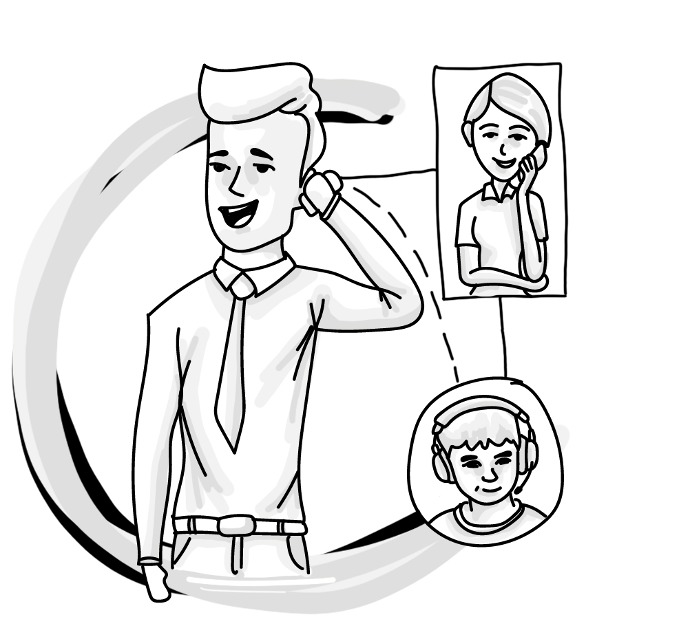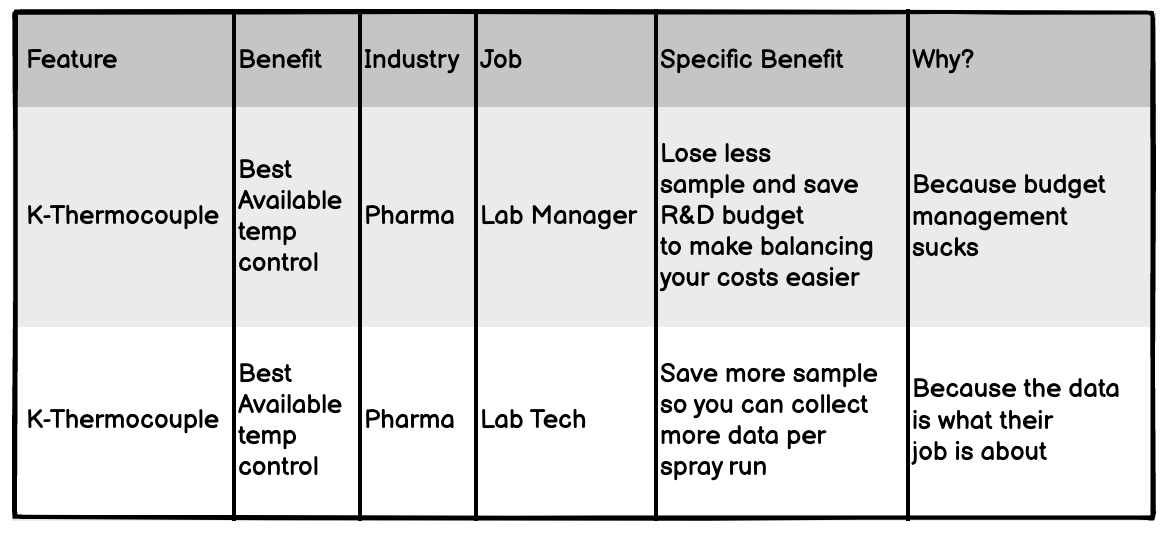In this blog we’re going to teach you how to create competitor-busting unique selling propositions.
Doing this well might be enough to generate 15-20% more revenue for your business this year. But if you want to be thorough and impressive, you’ll use this as part of an entire lead generating strategy.
We lay the strategy out, with instructions detailing exactly what to do, and when, in a series of blogs available here:
- This blog about why you should push hard for budget approval on this marketing strategy.
- This blog about thought leadership permission assets.
- This blog about case study permission assets.
- This blog about buying guide permission assets.
- This blog about email marketing your permission assets.
- This blog about using social media with your permission assets.
- This blog about making sure prospects find your permission assets on your website.
As with the other blogs you read here, we outline how people in different roles in your business can complete this B2B unique selling propositions workflow. Simple steps based on who you are.
There’s a method for owners, directors, and others managing staff at a high level. We call these people Conductors.


There’s a method for sales professionals and others who will benefit in their main job role by improving the business’ propositions of value. Making this kind of content isn’t their primary responsibility, so it’s done quickly, off the side of their desk. We call these people Curators.
And there’s a method for the marketing manager or marketing generalist or content writer. We call these people Creators.
Find your steps below and get on the path to the revenue (and salary) growth you want.

Unmask your most powerful unique selling propositions
Spend time developing unique selling propositions (USPs).
They’re your proposition of value. They’re like elevator pitches for each solution you offer. A powerful message you can convey in just a few seconds. In words and visually. They have this magic that makes you the only viable option for your lead, prospect, customer.
Why do you need USPs?
Because most people make decisions in an instant. And you need a fast way to communicate the best value you or your product or service gives them. Those are your unique selling propositions.
Sculpting your USPs also helps you understand your own business better. Face realities and accept or work to change them.
Do you manufacture a line of hot plates because you saw other manufacturers were gouging customers and selling increasingly poor quality hot plates at increasingly high prices, and you found a way to use new materials to build a lower cost but better quality hot plate?
Or do you manufacturer hot plates because there’s a huge customer base and you wanted a piece of that action? You wanted your customers to spend more budget with you by way of convenience?
Either is fine. But the second one doesn’t work as a USP. So you have to acknowledge it and move on to find something that works.
Oh. But for the purpose of this blog, here’s the biggest reason you need USPs:
We strongly believe the best way B2Bs generate hot sales leads is through permission assets (you can read more about permission assets here).
Good USPs help you make a great permission asset.
They help you give better instructions to the person making the permission asset, if it’s a member of your staff.
They help you make on-site merchandising assets easily.
And they every part of your job easier if you’re a B2B marketer.
Not enough time in the day. Want it done for you? Let us know here.
How many unique selling propositions do you need, and how many words should they be?
As many USPs as you can imagine!
If there are 12 ways you think your product differentiates itself from competing products, put those 12 USPs in neon lights.
The words should be short. Concise. Tight. And if you can say the same thing in 5 different ways, do it. Because different words appeal to different people. You want your prospects to see the words they relate to.
And they should lend themselves well to visual representation.
In most cases the USP is what you imagine sitting under a product image on your website. Attached to a small icon that stands out on your website or in your product brochure. Capturing that fleeting audience attention.
Often the goal of these USPs is to allow you to produce a page with content that easily stands out to prospects and conveys your message at a glance. To produce:
- A web page or email.
- A trifold brochure.
- Text on a trade show booth.
- Overlays on a video.
- Or, in our case, a good permission asset.
Take a look at how we use USPs on our AI product page for B2Bs
So how do you develop good unique selling propositions? What's the first step?
Your job role and experience doesn’t really matter. Good USPs come from a workflow anybody can use.
In fact, you’ve probably done this exercise already (maybe many times) in your business or in sales or marketing training. But you probably did it wrong. Well, not you. The person who walked you through it. So let’s do it right today.
- Take out sheet of paper. Old fashioned paper and pen stuff here.
- On the left hand side, record all your product’s features. These are probably listed on the product detail pages on your website or the PDF you send to prospects. To most of your prospects these features mean almost nothing.
- On the right side of the paper, using your ink pot and quill, write down the benefit or benefits each feature gives your prospect. The benefit is what matters to your customer. The series of blogs you’re reading right now feature insights from B2B marketing experts. The benefit is that you get an easy roadmap to increased revenue and profits that you can implement today. Or, more boldly - read these blogs and you’ll make more money.
Ok. Let’s look at the most common example we see on most B2B websites.
“We offer fast delivery.”
That's a feature. And in the world of Amazon, it’s also expected. So it’s weak.
We can whittle that down to a generic benefit - get delivery of the product tomorrow. But that’s still weak.
Why is it actually important to the customer? What does that impact in their business?
- Maybe less instrument down time.
- Maybe less money wasted on overstocking.
- Maybe less space dedicated to hazardous material storage.
- Maybe they can place smaller orders more often because that’s important for cash flow in the business.
As a business statement, it could be something like: Right size your facility. Don’t waste budget on excess inventory and the space to hold it. We keep it for you.
Or: Don’t order parts until your customer signs the contract. You can still start production tomorrow thanks to our fast local logistics.
Want to approve your USPs, rather than spend time creating them?
Ask us to do it here.
But is the “why” the same for everyone in your target audience or is it different based on the type of industry they’re in or the job role you're speaking to?
Many B2B companies have a basic breakdown of customers, industry, or company type (public, private, EDU, government, local, international, whatever). Because you (or the person in your role before you, or someone in the business) followed email marketing best practices for the past 20 years, your list is segmented in such a way. And you can use this segmentation to your advantage.
If you don’t have access to this kind of segmentation, you could look at websites or LinkedIn profiles related to the last 50 sales the business has made.
It’s valuable to know about the audience because the “why” and even the benefits of the features from your equipment differ based on the type of industry your customer is in.
And you can even go further. The individual human engaging with your business sees different benefits depending on their job role.
So, do we write one USP in an attempt to appease all industries and job roles? You’re 1,085 words into this blog right now, so you can probably guess the answer is a very loud no.
Now we (and by we, we mean you) want to do some mapping.
Here’s exactly how to build the foundation of your unique selling propositions:
Record the various industries and the job titles in your contact database on another piece of paper. If you don’t have that information, guess. Spot check your customers' websites (like we mentioned above, based on your last 50 sales). Do the same to Linkedin accounts.
You’re going to map the USP statements to each industry and job role, and customize a specific phrasing of the benefit for that role. Then add a new column to explain why that benefit matters to that role.
It’ll look something like this in the end:

Do this and your business positioning, product positioning, or service positioning will be better than almost every business in your B2B niche.
“But there are huge brands in my niche and they have all the money and resources to do this better than me.”
Wrong, friend. Wrong!
Here’s how Bombardier, with vast creative resources, positions its Challenger 350 Business Jet.
- Smooth ride. An optimally balanced aircraft design provides you with an exceptionally smooth ride from takeoff to touchdown.
- Largest cabin. Sit back and relax in the largest cabin in its class. Featuring exquisite finishes and sleek styling, a flat floor design and safe access to baggage at all times, it delivers high style and comfort without compromise.
- Quietest cabin. Minimize noise to maximize comfort in the quietest cabin in its class. Equipped with a standard entry door acoustic curtain and galley pocket door, the aircraft’s sound suppressing design ensures optimal productivity and relaxation in flight.
- Lowest direct operating costs. Through longer maintenance intervals, low parts cost and increased efficiency, operators benefit from the lowest in-class operating costs making the Challenger 350 aircraft a wise decision.
- Highest reliability. With its outstanding dispatch reliability, the Challenger 350 aircraft was designed to deliver peace of mind.
We know the audience is corporate flight departments and charter operations. Bombardier stopped at the features and never got to the actual benefits. If you were Bombardier, you might say this to charter operations:
- Coax nervous flyers from your competitors. The unique balancing of this aircraft gives nervous flyers a smoother ride. So they choose you over competitors.
- Book higher-value clients who work on the go. A larger cabin than comparable aircrafts gives high-value clients more space to work and unwind on the move. Something your competitors can’t offer.
- Capture more frequent business travelers. The relentless hum of most aircraft gets in the way of business calls and deep work. Frequent business travelers prefer quiet spaces where they control their surroundings. With the Challenger 350, it’s your advantage.
- Earn more profit with each flight. With longer maintenance intervals, low parts cost and increased efficiency, you can increase your profits without raising your prices.
- Win more business through your reputation. Outstanding dispatch reliability means your clients miss fewer arrivals. Maybe they never miss an arrival time again!
Bombardier - want to make your marketing better?
When you have a collection of USPs that make you want to buy from your business, you’re ready to rock and roll with your primary sales lead generating asset. Something we call a permission asset.
But these USPs will help guide your decision making with every piece of B2B marketing collateral you create.
You now have the most foundational, raw value your customers care about at your fingertips.
You have clear direction for anyone in the business creating customer facing assets. They now know exactly the value they need to convey in the content they create.
The next blog in this series will show you how to use these unique selling propositions to create a permission asset. Your permission asset will generate leads for your business for the next 10 years. It’s like a new member of your sales team. But it doesn’t sleep and doesn’t get down with the office politics.
So when you’re ready, click here for what’s next.